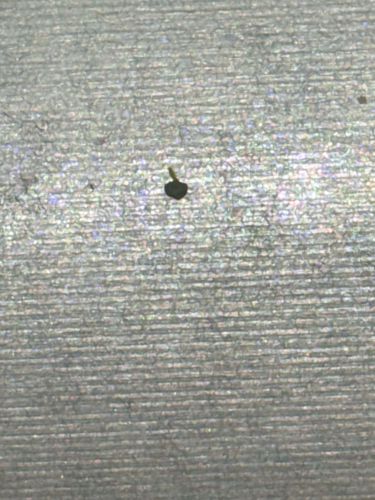Thrips (likely a very small species)
Scientific Name: Too small to determine exact species, but genus within Thysanoptera is likely Frankliniella, Thrips, or similar.
Order & Family: Order: Thysanoptera (Thrips)
Size: Typically 0.5 to 3 mm in length, with the individual in the image appearing to be at the smaller end of this range or even smaller, making precise identification difficult without greater magnification and detail.

Natural Habitat
Widely distributed globally, found on various plants, flowers, fruits, and vegetables. Also found in leaf litter and under bark.
Diet & Feeding
Primarily plant sap, pollen, and fungal spores. Some species are predatory on other small arthropods.
Behavior Patterns
Thrips are known for their unique feeding style, where they pierce plant cells and suck out the contents. Many species develop through several nymphal instars before pupating and emerging as adults. They can reproduce rapidly under favorable conditions, sometimes parthenogenetically (without fertilization). Some species are migratory and can be carried long distances by wind.
Risks & Benefits
Potential Risks: Many thrips species are significant agricultural pests, causing damage to crops by feeding (leading to silvery appearance, distorted growth, and reduced yield) and by transmitting plant viruses. Some can bite humans, causing minor irritation, but are not known to transmit human diseases. Benefits: A small number of thrips species are predatory and can help control populations of other pest insects like mites. They also play a role as pollinators for some plants.
Identified on: 9/1/2025